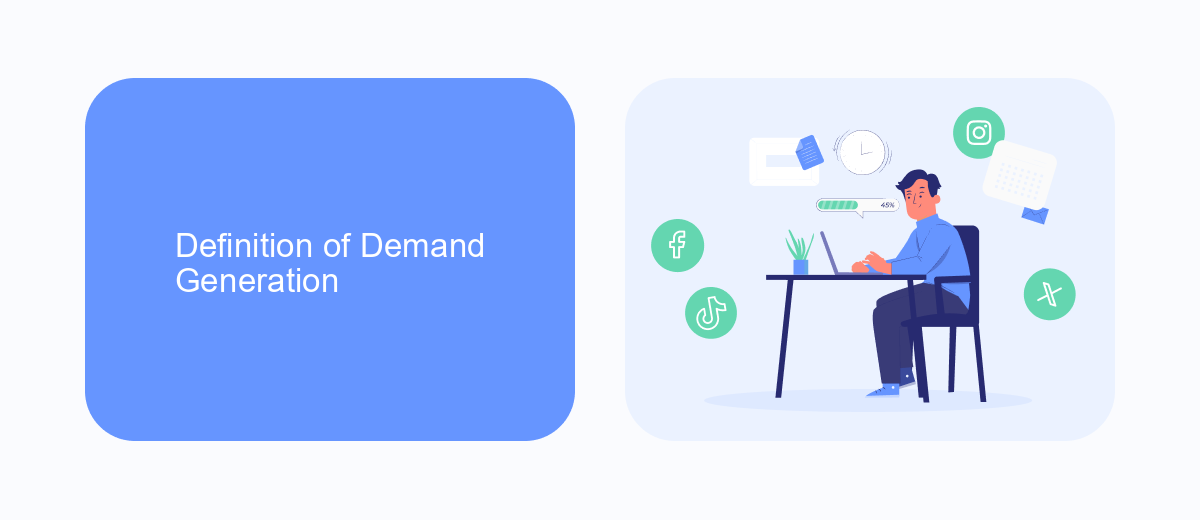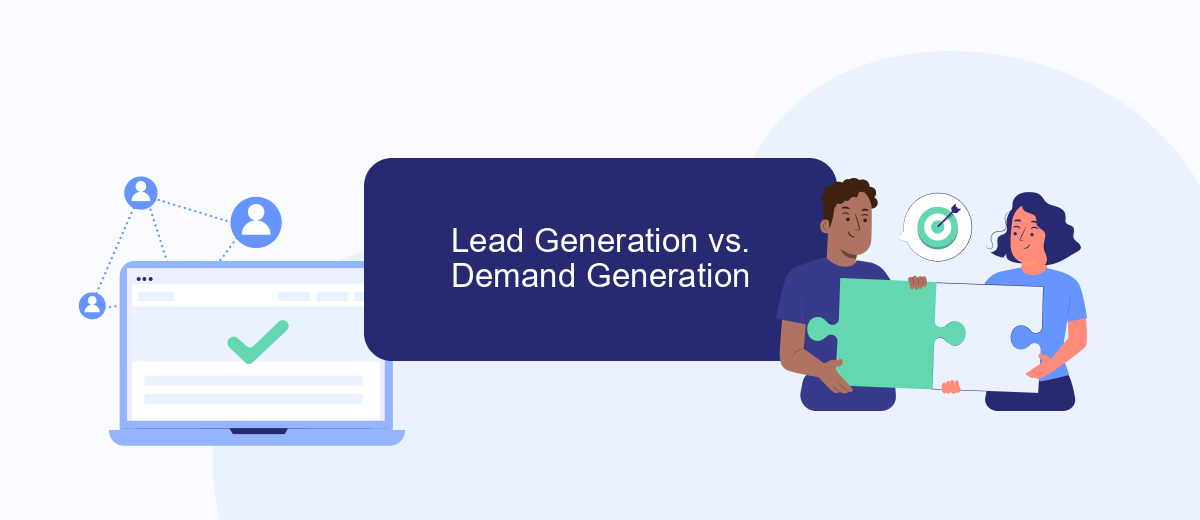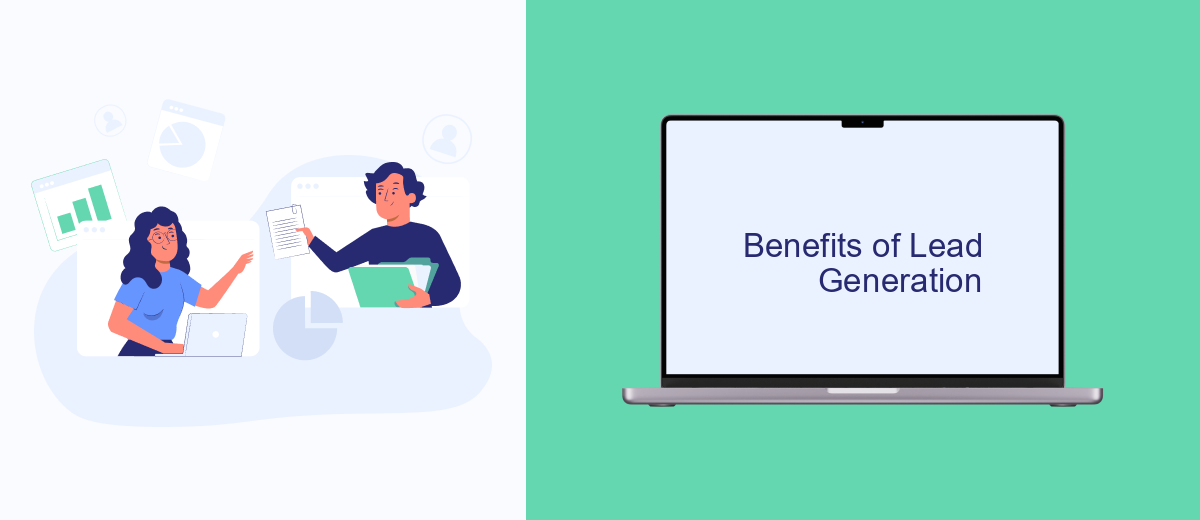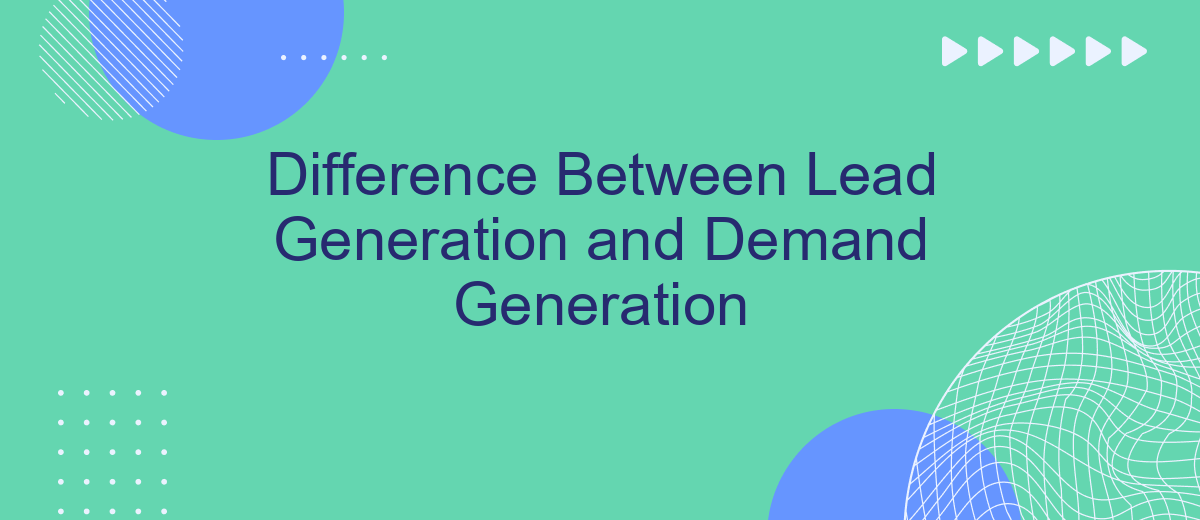In the dynamic world of marketing, understanding the distinction between lead generation and demand generation is crucial for crafting effective strategies. While both aim to drive business growth, they operate differently in the customer acquisition funnel. This article delves into the core differences between these two approaches, helping you leverage them to maximize your marketing efforts and achieve your business goals.
Definition of Lead Generation
Lead generation is a critical process in marketing that focuses on attracting and converting strangers and prospects into someone who has indicated interest in your company's product or service. This process involves various strategies and tools to capture potential customers' information, such as their name, email address, or phone number, which can then be used for targeted marketing efforts.
- Identifying potential leads through market research and analysis.
- Creating compelling content and offers that attract prospects.
- Utilizing lead capture forms and landing pages to gather contact information.
- Nurturing leads through email marketing campaigns and follow-ups.
- Integrating with CRM systems to manage and track leads effectively.
Effective lead generation requires a combination of strategic planning, engaging content, and the right tools. Services like SaveMyLeads can streamline the integration of lead data into various marketing platforms, ensuring that no potential customer is lost. By automating the lead capture and follow-up processes, businesses can focus more on converting leads into loyal customers.
Definition of Demand Generation

Demand generation is a comprehensive marketing strategy focused on creating awareness and interest in a company's products or services. Unlike lead generation, which aims to capture contact information of potential customers, demand generation seeks to build a long-term relationship with the audience by providing valuable content and experiences that educate and engage them. This approach involves a variety of tactics, including content marketing, social media engagement, webinars, and events, all designed to nurture potential customers through different stages of their buying journey.
One of the essential components of effective demand generation is the seamless integration of various marketing tools and platforms. Services like SaveMyLeads can be instrumental in this process by automating the integration of different marketing channels, ensuring that data flows smoothly between systems. This not only enhances the efficiency of marketing campaigns but also provides deeper insights into customer behavior, enabling marketers to tailor their strategies more effectively. By leveraging such integrations, businesses can create a cohesive and impactful demand generation strategy that drives sustained growth and brand loyalty.
Lead Generation vs. Demand Generation

Lead Generation and Demand Generation are two crucial strategies in the marketing world, each with distinct objectives and methods. Lead Generation focuses on capturing interest in a product or service to build a list of potential customers. On the other hand, Demand Generation aims to create awareness and interest in a brand or product, nurturing long-term customer relationships.
- Lead Generation: Targets potential customers who have shown interest in specific offerings.
- Demand Generation: Focuses on creating brand awareness and educating the market.
- Lead Generation: Often involves direct actions such as filling out forms or subscribing to newsletters.
- Demand Generation: Utilizes content marketing, webinars, and social media to build interest over time.
While both strategies are essential, integrating tools like SaveMyLeads can streamline the process. SaveMyLeads automates the collection and management of leads, ensuring that businesses can efficiently convert interest into actionable leads. By combining both approaches, companies can achieve a balanced marketing strategy that drives both immediate and sustained growth.
Benefits of Lead Generation

Lead generation is a crucial aspect of any successful marketing strategy, primarily focusing on identifying and cultivating potential customers for a business's products or services. By generating leads, businesses can target specific audiences, ensuring that marketing efforts are directed towards individuals who are more likely to convert into paying customers.
One of the primary benefits of lead generation is that it helps businesses to build a database of interested prospects. This database can be used to nurture leads through personalized communication and targeted marketing campaigns, ultimately increasing the chances of conversion.
- Increases sales opportunities by targeting potential customers
- Enhances marketing ROI by focusing on interested prospects
- Improves customer acquisition strategies through data-driven insights
- Facilitates personalized marketing efforts and communication
Moreover, integrating lead generation tools like SaveMyLeads can streamline the process by automating lead capture and management. SaveMyLeads allows businesses to connect various marketing platforms and CRM systems, ensuring seamless data flow and efficient lead handling. This not only saves time but also ensures that no potential lead is overlooked, ultimately driving business growth.
- Automate the work with leads from the Facebook advertising account
- Empower with integrations and instant transfer of leads
- Don't spend money on developers or integrators
- Save time by automating routine tasks
Benefits of Demand Generation
Demand generation offers several key benefits that can significantly enhance a company's marketing and sales efforts. Firstly, it helps in building brand awareness and credibility by creating a consistent and compelling message across various channels. This approach not only attracts potential customers but also nurtures existing ones, ensuring long-term engagement and loyalty. By providing valuable content and solutions to customer pain points, demand generation establishes a strong brand presence in the market.
Secondly, demand generation is instrumental in improving lead quality and conversion rates. By targeting specific audiences with tailored content, companies can attract more qualified leads who are genuinely interested in their products or services. Tools like SaveMyLeads can further streamline this process by automating lead capture and integration, ensuring that no potential customer falls through the cracks. This leads to more efficient marketing campaigns and a higher return on investment, ultimately driving revenue growth and business success.
FAQ
What is the primary difference between lead generation and demand generation?
How do lead generation and demand generation work together?
Which metrics are important for measuring the success of lead generation?
Can automation tools be used for both lead generation and demand generation?
What are some common tactics used in demand generation?
Are you using Facebook Lead Ads? Then you will surely appreciate our service. The SaveMyLeads online connector is a simple and affordable tool that anyone can use to set up integrations for Facebook. Please note that you do not need to code or learn special technologies. Just register on our website and create the necessary integration through the web interface. Connect your advertising account with various services and applications. Integrations are configured in just 5-10 minutes, and in the long run they will save you an impressive amount of time.

